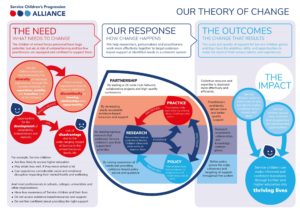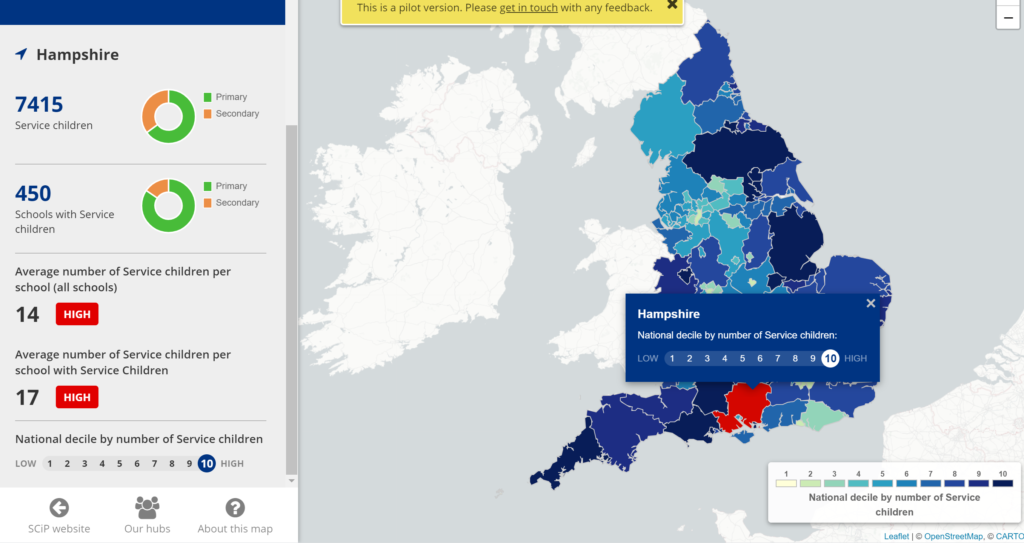Collaboration: doing together what you cannot do alone. but how do we make sure it’s effective?
OUTREACH BLOG | 13 JULY 2020
By The Service Children’s Progression Alliance (SCiP)
overview
Uni Connect is all about collaboration. So what happens when several Uni Connect partnerships work with a national network focussed on progression for one particular underrepresented group?
The Service Children’s Progression Alliance’s theory of change articulates the value of partnership across sector and geographical boundaries between practitioners, researchers and policymakers, breaking down barriers between operating practices, priorities and outlooks, in order to collaborate for change.

The Alliance worked with six Uni Connect consortia on a 2018-19 project to create an online targeting tool, commission research to identify what constitutes effective school support and develop associated professional development resources.
mapping the distribution of service children
The project recognised that accessible data is key to effective targeting and so piloted an online targeting tool to increase engagement through understanding of the distribution of Service children and to support better targeting of investment and activity. The interactive map uses analysis of Department for Education data on Service Pupil Premium funding to demonstrate the scale and density of the Service child population by local authority.

the thriving lives toolkit for schools
The research (undertaken by iCeGS at the University of Derby) engaged with pupils, Headteachers and other educators and identified seven features of effective support for Service children, which the collaboration has now developed into the Thriving Lives Toolkit and linked to a set of new professional development resources. Schools throughout the Uni Connect consortia are now piloting the toolkit as part of an evaluation project co-led by researchers across the consortia.
James Elliot, the Higher Horizons evaluation officer leading the pilot commented that:
This has been an example of intelligent collaboration combining the SCiP Alliance’s national endeavour and profile with the regional knowledge and evaluation know-how of Uni Connect partnerships; at Higher Horizons we feel the Toolkit will have a real impact because of this
so why service children?
‘It is in the realm of up to 4 out of 10 children who, if in the general population would go to university, do not go if they are from a military family’ (McCullouch and Hall, 2016). Service children could be characterised as GCSE achievers who do not progress to higher education as we would expect. Many are in Uni Connect target wards and attend Uni Connect schools, but high levels of mobility, the emotional impact of parental deployments, and poor transition and curriculum alignment experiences, mean that additional support can be necessary and professionals may be under-equipped to provide it. Discontinuity in learning, relationships and opportunities due to the complex and highly individual interplay of school transition and separation from parents can have a negative effect on Service children’s achievement, progression, and mental health and wellbeing. The Office for Students has confirmed that Service children are a target group.



